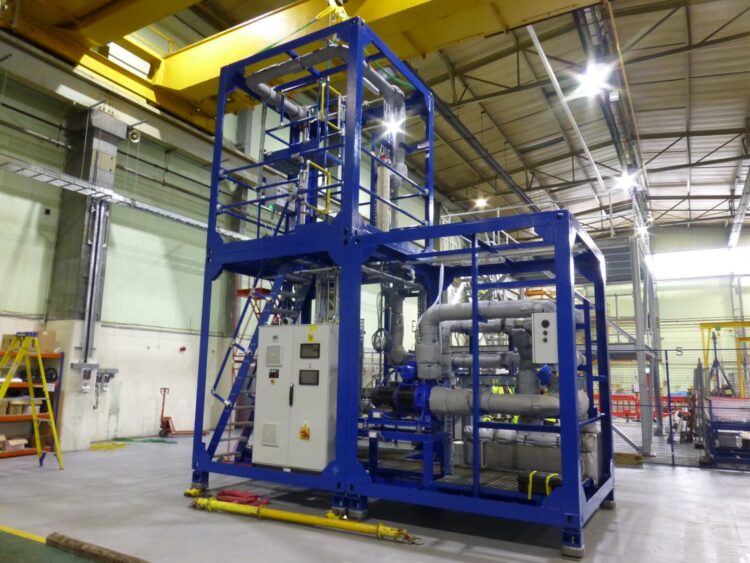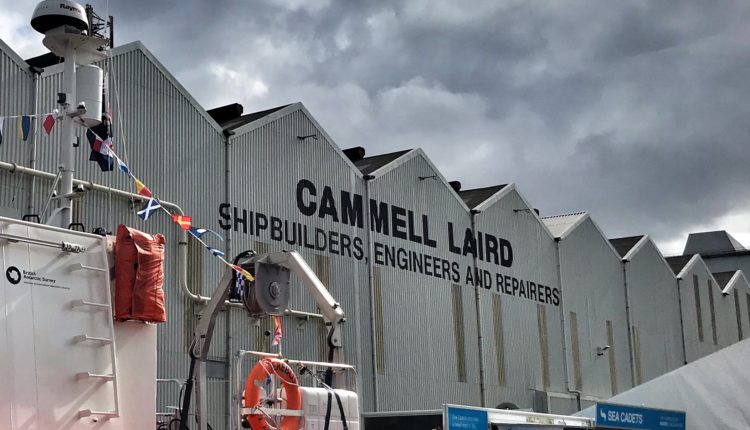Cammell Laird delivers game-changer nuclear project
Birkenhead shipyard and engineering firm Cammell Laird has delivered a construction project that could help revolutionise the building of nuclear power stations. Tony McDonough reports

Cammell Laird has completed the design, manufacture and installation of a new test rig that could help revolutionise the building of nuclear power stations.
As part of Project Faith (Fuel Assembly Incorporating Thermal Hydraulics), the National Nuclear Laboratory (NNL) tasked the Birkenhead shipyard and engineering firm with building the new thermal hydraulic test rig which is 7m tall, 5m wide, and 2.5m deep.
Project Faith aims to use the build of the experimental rig as a model for proving the facility’s modular construction techniques in the nuclear industry. Traditional nuclear power stations are prohibitively expensive to build. It is hoped a new generation of miniature reactors built using modular techniques could be a game-change for the sector.
Jamie Willgress, project manager at Cammell Laird, part of the Project Faith team, said: “Our expertise in the block build fabrication of ships was instrumental to this project and we’ve been able to share considerable best practice from our work constructing some of the worlds’ most high-profile vessels including RRS Sir David Attenborough and the Queen Elizabeth aircraft carriers.
“Modular construction will improve the delivery of nuclear projects in the future and revolutionise the way nuclear plant is constructed so this is an incredibly important project to be part of.”
Designed to circulate water around a pipe loop, the stand-alone rig enables different test sections to be installed to study the impact of flowrates and temperature on the flow regime in the geometry and workings of a nuclear reactor.
The rig will be used by scientists at the NNL to collect data that will inform future nuclear reactor design and help to deliver a more robust talent pipeline to support the UK nuclear industry.
Jacob Graham, project engineer, added: “It’s been an honour for our team to play such an instrumental role in this project and to know that our construction methodologies, processes and insights can help to drive innovation in the sector.
“This project has also given us an important opportunity to invest further in our in-house skills and supply chain relationships – both of which will be necessary to help the UK nuclear industry thrive in the future.”
Design of the rig began in November 2019 with the build taking place between September 2020 and February 2021. It was delivered to NNL’s host facility at Workington Rig Hall in March.
As part of the design and build process, Cammell Laird worked closely with electrical subcontractor Seaking for the electrical aspect of the fabrication and 11i, a start up from the wind energy industry which produced the rig’s network of sensors.
Students from the University of Liverpool were also involved in the project and found an ingenious way to avoid COVID-induced delays to the rig’s Hazard and Operability Analysis (HAZOP) testing, by creating virtual 3D models to simulate the process in the real world.
Now, the Cammell Laird team has started work on the final part of the project which requires the design of a sodium test rig.

